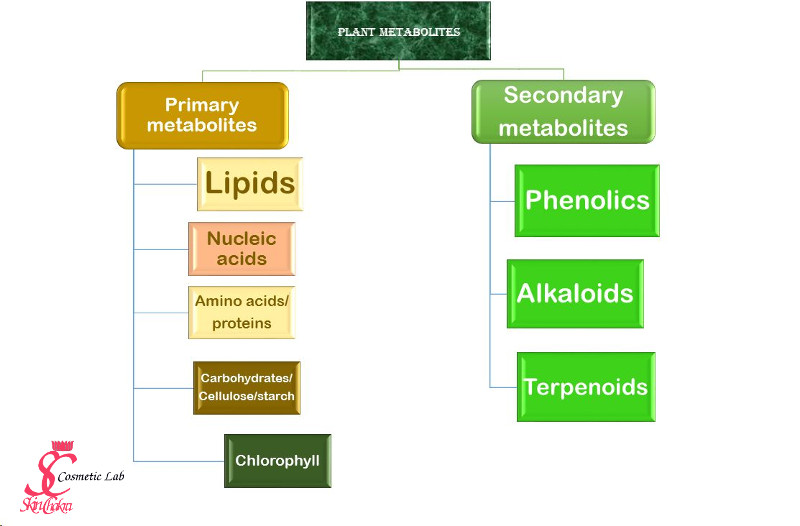
Montag, 25. April 2016
Plant Extracts 101(Part III): Phytochemicals in cosmetics
I hope you have enjoyed part I and part II of this series. Before we proceed further, we need a short (or long) shortcut to chemistry and plant biology. I promise to keep it as short and basic as possible.
Disclaimer: I'm a cosmetic chemist and no biologist. If you happen to be a biologist and reading this post, feel free to add whatever you need necessary and to correct my possible mistakes.
One of the most common questions among formulatio students is: Which extract shall I choose?
What I mean here is not the plant or plant part but the carrier. This becomes a more important question when you want to make your own extracts (or infusions) from scratch.
Shall I use alcohol, water, glycerine, propanediol or an oil as the carrier?
The answer is:
It depends on your goal of extraction.
What do you want from a certain extract/infusion?
Each plant contains hundreds of phytochemicals and the choice of the solvent or carrier depends on your aim:
- Do you want to have the colour of a certain plant (beetroot or turmeric for instance)?
- Do you want to incorporate the scent of a certain plant part in your product (vanilla or coffee for example)?
- Are you looking for certain active/therapeutic ingredients in a given plant (Sterols, vitamins, flavonoids, anti-oxidants etc.)?
Depending on what you're looking for and your final aim, your choice of solvent and your choice of plant parts may vary significantly.
Most often both lipophilic and hydrophilic extracts are available for a certain plant. Both of them may be amazing skin care ingredient (like Chamomile) but containing completely different active ingredients (because some active ingredients are lypophilic and some are hydrophilic). In this case, depending on your concept and your product base you can decide to use any of them, or ven better, use both of them (specially if you're making an emulsion).
In some other cases, suppliers are selling completely useless extracts just to sell an extract without any sense or any justification. One of the most frequent cases is lipophilic tea extract (green tea, white tea or black tea). I honestly have no idea about the benefits of a lipophilic tea extract (except the benefits to the bank account of the supplier). Tea's most important active ingredients are its polyphenols, specially catechins which are potent anti-oxidants and which can bind collagen, contribute to reduction of TEWL, increasing skin firmness and an overall anti-oxidative and anti-ageing function. Since catechins happen to be water soluble, what on earth could be extracted into an oil?
Knowing in advance about the carrier you need for a certain plant (or a certain ingredient) is extremely important when you're making your own extracts. This is why you need a basic understanding of plant materials. Let's get started.
(I'm breaking this post into small morcels to avoid you fall asleep on your laptop or tablet.)
Although there is no clear borderline, plant chemicals are basically divided into primary and secondary metabolites.
Primary metabolites are organic material synthesized by the plant and are necessary for nutrition and growth of the plant. These are basically categorized to
- lipids (plant oils and fats)
- carbohydrates (sucrose, cellulose and starch)
- nuclaeic acids (carry plant genetic information)
- amino acids and proteins
- Chlorophyll (necessary for photosynthesis)
Although we apply most of them in our cosmetic products, these are not quite relevant for our discussion about plant extracts.
Secondary metabolites are not essential for plants nutrition and growth but have other functions. These include defense (against fungi or herbivores) or pollinator attraction. These secondary metabolites have an enormous importance in pharmacy and cosmetics. This is the part which is most relevant to our plant extracts discussion and we're going to discuss each class during the coming posts.
Secondary metabolites are very roughly categorized into:
- Alkaloids (such as morphine and cocaine), more than 10,000 are already separated
- Terpenoids (more than 22,000 are already separated). These are constituents of most essential oils but terpenoids are a huge class covering other phytochemicals such as squalene, beta-carotene and even latex
- Phenolics (from salicylic acid to lignin). This is the most interesting and most widely studoes category of secondary metabolites
In some text books, a fourth class is named: glycosides but since this class has common members with other groups (anthocyanosides, anthraquinone glycosides etc.) we'll not discuss them as a stand-alone group.
Since alkaloids are hardly being used in cosmetics, we'll just dedicate a short passage to them and them move on to (for cosmetic formulators) more attractive and important phytochemicals.
Alkaloids are usually bitter and poisonous. They are mainly produced by the plant as a defensive reaction to invadors. They are often water insoluble and have a geat importance in pharmacy. Here the poison is medicine and the medicine is the poison. The real border between medicine and poison is the dosage. To alkaloids belong as well some stimulants such as caffeine and theobromine. Other alkaloids include
- ephedrine
- strychnine
- atropine
- cocaine
- ricine
- nicotine
- papaverine
- morphine
Nice ingredients???
We'll continue this discussion in coming posts.
I would very much like to hear your opinion about extracts and plant extracts 101 series. Feel free to send me your questions, comments and suggestions. I really enjoy your participation in our Facebook discussions.
Continue to part IV.


